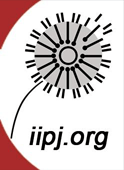Article Title
Statistics for Community Governance: The Yawuru Indigenous Population Survey, Western Australia
Abstract
This article presents a case study of an exercise in Aboriginal community governance in Australia. It sets out the background events that led the Yawuru Native Title Holders Aboriginal Corporation in the town of Broome on Australia’s northwest coast to secure information for its own needs as an act of self-determination and essential governance, and it presents some of the key findings from that exercise. As the Indigenous rights agenda shifts from the pursuit of restitution to the management and implementation of benefits, those with proprietary rights are finding it increasingly necessary to build internal capacity for post-native title governance and community planning, including in the area of information retrieval and application. As an incorporated land-holding group, the Yawuru people of Broome are amongst the first in Australia to move in this area of information gathering, certainly in terms of the degree of local control, participation, and conceptual thinking around the logistics and rationale for such an exercise. An innovative addition has been the incorporation of survey output data into a Geographic Information System to provide for spatial analysis and a decision support mechanism for local community planning. In launching and administering the "Knowing our Community" household survey in Broome, the Yawuru have set a precedent in the acquisition and application of demographic information for internal planning and community development in the post-native title determination era.
Creative Commons License

This work is licensed under a Creative Commons Attribution-Noncommercial-No Derivative Works 4.0 License.
Recommended Citation
Taylor, J.
,
Doran, B.
,
Parriman, M.
,
Yu, E.
(2014).
Statistics for Community Governance: The Yawuru Indigenous Population Survey, Western Australia. The International Indigenous Policy Journal, 5(2)
. Retrieved from: https://ir.lib.uwo.ca/iipj/vol5/iss2/2
DOI: 10.18584/iipj.2014.5.2.2
COinS
